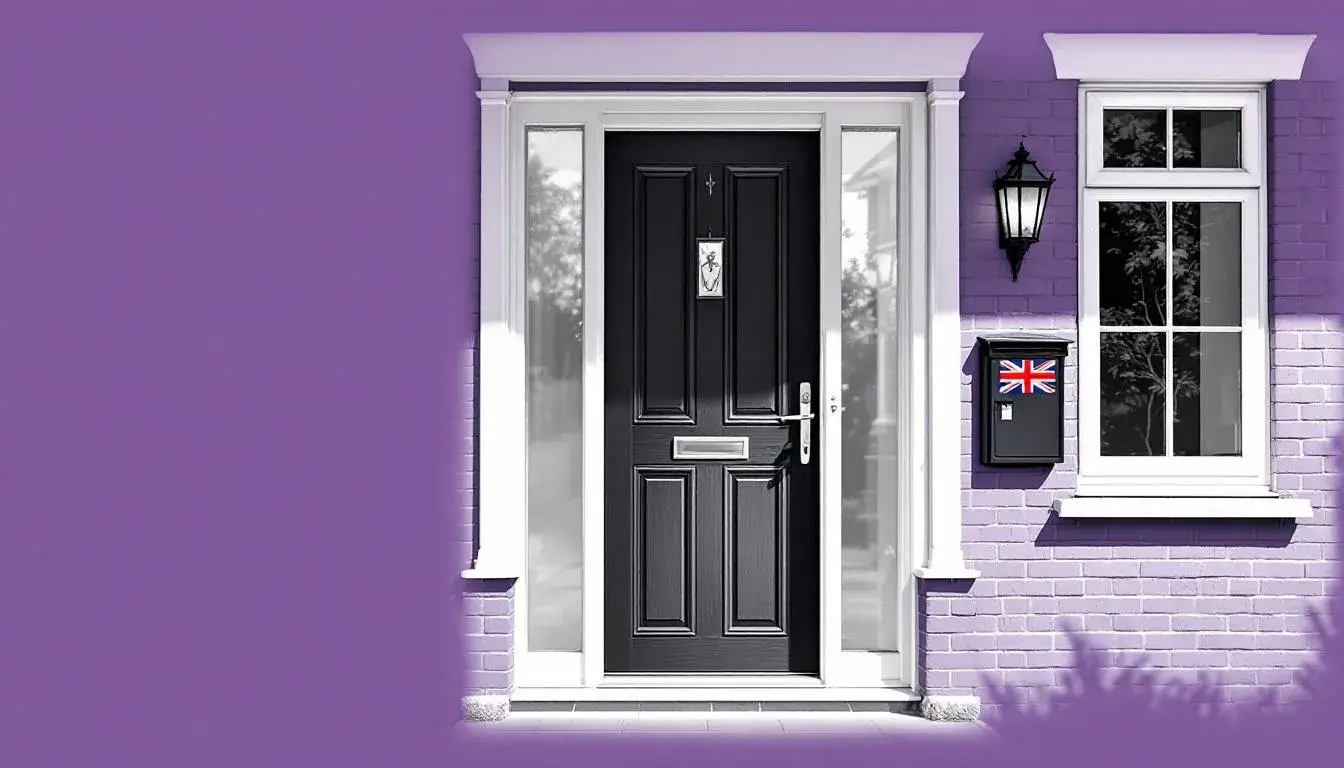
How much you can borrow with a personal loan in the UK

The big picture on UK personal loan limits
Personal loans remain a practical way for UK borrowers to fund planned expenses, consolidate debt, or smooth cash flow with fixed monthly repayments. Yet the question most people ask first is simple: how much can I actually borrow? The answer sits at the crossroads of lender policy, your income, your credit profile, and your existing commitments.
Across the UK market, unsecured personal loans commonly range from £1,000 to £25,000, with a hard ceiling around £50,000 available from a smaller set of lenders and typically for strong, often existing, customers. Some providers allow applications above the usual band - for example up to £35,000 - but approval will hinge on affordability checks, credit performance, and how your debt-to-income ratio looks after the new borrowing. Lenders generally prefer to see total monthly debt payments stay below 40% of your income. If the new loan pushes you beyond that threshold, expect your limit to shrink or the application to be declined.
Term length matters too. In the UK, typical terms run from one to ten years. A shorter term generally raises the monthly repayment but reduces the total interest you pay. Stretching the term does the opposite - lowering the monthly outgoing while increasing the overall cost. Representative APRs for the most competitive offers start from around 5.8% for larger, well-qualified loans, but average rates can land higher depending on the amount, your credit record, and the lender’s risk view. Credit unions remain a useful backstop for smaller sums, with capped APRs that protect against extreme pricing.
Pricing is also shaped by the broader rate environment. When the Bank of England trims the base rate, some lenders follow by nudging down personal loan APRs, albeit not always immediately or uniformly. If base rates ease - for example towards 4% - borrowing costs can soften, giving you slightly more headroom for the same monthly budget.
The headline figure is not the whole story - the amount you can borrow depends on what you can comfortably repay without straining your budget.
If you are weighing up a loan for a car, a kitchen refit, or tidying up card balances, clarity on limits and costs will help you avoid over-borrowing and keep your credit profile healthy. As a UK-based retail finance broker, Kandoo helps you compare options from multiple lenders in one journey, so you can see realistic rates and limits based on your profile rather than guesswork.
Who should read this
If you are planning a major purchase, consolidating expensive revolving debt, or need a clear, fixed-cost way to spread a lump sum, this guide is for you. It is designed for UK residents who want to understand how lenders set borrowing limits, how APR and term choices affect monthly affordability, and what credit and income criteria typically apply.
It will be particularly useful if you are unsure whether to apply for £7,500, £15,000, or something larger, and want to gauge your odds before making a credit search. It also suits anyone comparing unsecured personal loans with secured options.
The essentials you need to know
Loan size bands: Most unsecured personal loans sit between £1,000 and £25,000, with select lenders going to £35,000 or up to £50,000 for strong applicants.
Affordability and DTI: Lenders prefer a debt-to-income ratio below 40%, including mortgages, cards, and the proposed loan.
Terms and repayments: Typical terms run 1 to 10 years. Shorter terms mean higher monthly payments but less total interest.
APR basics: Representative APRs for top-tier borrowers can start around 5.8% for larger loans, but many borrowers will see higher rates.
Credit standing: Clean recent credit history, no recent CCJs or bankruptcies, on-time payments, and stable accounts improve eligibility and rates.
Income thresholds: Expect minimum income requirements, often £10,500+ for sub-£20k loans and £20,000+ for higher tiers, subject to lender policy.
Loan purpose: Common uses include home improvements, car purchases, and debt consolidation, with fixed repayments aiding budgeting.
Market trend: Around 7% of UK adults currently hold unsecured personal loans, with 13% considering borrowing, signalling healthy demand and competition.
Your borrowing routes at a glance
Unsecured personal loan with a high street bank - Suitable for those with strong credit and existing relationships. Limits can be higher for current customers, sometimes up to £50,000. Decisions can be fast, especially in-app.
Unsecured loan from a specialist or digital lender - Often competitive for mid-range sums (£3,000 to £15,000). Flexible criteria and swift online processes. APRs vary widely with credit profile.
Credit union personal loan - Community-focused lending with capped APRs. Good for smaller amounts or rebuilding credit. May require membership and regular saving.
Secured homeowner loan - Uses property as collateral to access larger sums than typical unsecured caps. Lower monthly payments over longer terms but increased risk to your home.
Dealer or point-of-sale finance - Useful for car purchases or home improvement projects. Rates can be keen, but always compare with a personal loan to avoid overpaying.
Overdrafts and credit cards - Flexible but potentially costly for large balances. Consider only for short-term needs or where promotional rates are truly beneficial.
A simple rule of thumb: match the product to the life of the purchase. Do not take a 10-year loan for a 2-year asset unless affordability and total cost still make sense.
What it could cost you and why it matters
| Item | Typical range or note | What it means for you |
|---|---|---|
| Loan amount | £1,000 to £25,000 common; up to £50,000 possible | Larger loans may secure lower headline APRs but must fit affordability checks |
| Term length | 1 to 10 years | Shorter term - higher monthly cost, less interest; longer term - lower monthly cost, more interest |
| Representative APR | From ~5.8% for strong profiles | Actual APR depends on credit, amount, and term - always compare total cost |
| Monthly repayment | Driven by amount, term, APR | Keep DTI under 40% to improve approval odds and resilience |
| Total interest paid | Increases with term and rate | Extending the term cuts monthly outgoings but raises total paid |
| Fees | Often minimal on personal loans | Check for early settlement rules and any admin charges |
Can you qualify for the amount you want
Eligibility hinges on credible affordability, stable income, and a solid credit record. Most lenders require you to be at least 21, a UK resident, and able to evidence income. As loan sizes rise, minimum income thresholds tend to step up - for example, around £10,500+ for loans under £20,000 and £20,000+ for higher tiers, though policies vary. Your recent credit behaviour is scrutinised for signs of missed payments, defaults, CCJs, or bankruptcy. Clean conduct and length of credit history help a great deal.
Affordability modelling is central. Lenders estimate your monthly commitments and test whether your new repayment leaves breathing room, often aiming for a debt-to-income ratio under 40%. They may adjust the maximum amount or offer a longer term to bring the DTI down, although that trade-off raises the total interest. If you are near the limit, consider reducing existing revolving balances or consolidating at a lower rate to improve your profile.
If you need more than £50,000, unsecured routes are rarely suitable. A secured loan may be considered, but remember the risk is materially higher since your asset backs the borrowing.
From application to funds in your account
Check your credit file and correct any errors.
Calculate an affordable monthly repayment target.
Use eligibility checkers to gauge soft-search outcomes.
Compare APRs, terms, and total repayable across lenders.
Submit an application with accurate income and expense data.
Upload documents and complete digital identity checks.
Review the agreement, then sign to release funds.
Advantages and drawbacks at a glance
| Aspect | Pros | Cons |
|---|---|---|
| Unsecured personal loan | Fixed repayments, no collateral, fast decisions | APRs vary widely, smaller overall limits vs secured |
| Longer term | Lower monthly cost improves cash flow | Higher total interest, longer commitment |
| Shorter term | Less interest overall, faster payoff | Higher monthly repayment, tighter budget |
| Credit union option | Capped APRs, community support | Lower maximum loan amounts, membership needed |
Read this before you press apply
A representative APR is not a guarantee. Only a majority of successful applicants must receive that rate, and you might be offered higher. Always compare the total amount repayable, not just the monthly figure, and sanity-check whether the loan still makes sense if rates edge up elsewhere in your budget. If you are consolidating debts, commit to closing or reducing old credit lines to avoid creeping balances returning. Watch for early settlement rules - many loans allow full repayment with limited or no penalties, which can save interest if your circumstances improve. Time your application if base rates are falling and your credit file is strong, but avoid multiple hard searches in quick succession.
Alternatives worth a look
Secured homeowner loan - Higher limits for large projects, but property at risk.
0% purchase or balance transfer credit card - Effective for shorter-term borrowing if you can clear within the promo window.
Credit union loan - Fair pricing with capped APRs for modest sums.
Remortgage or further advance - Potentially lower rates but longer terms and fees; consider total cost.
Savings redraw or emergency fund - Cheapest option if it does not compromise essential buffers.
Frequently asked questions
Q: What is the typical maximum I can borrow unsecured in the UK? A: Many lenders cap unsecured personal loans at £25,000, with some offering up to £50,000 for well-qualified, often existing, customers. Above that, secured borrowing is more common.
Q: How much income do I need for a larger loan? A: Policies vary, but lenders often look for at least £20,000 annual income for higher bands. For loans under £20,000, thresholds from about £10,500 may apply, subject to affordability.
Q: How do terms affect my monthly payment? A: Shorter terms mean higher monthly payments but reduce total interest. Longer terms lower the monthly bill but raise the overall cost. Pick a term you can sustain.
Q: What APR could I get? A: Top-tier representative APRs can start around 5.8% for larger sums, but your rate depends on credit history, loan size, and term. Always compare offers using total repayable.
Q: Does my debt-to-income ratio really matter? A: Yes. Lenders prefer total debt payments under 40% of income. A lower DTI generally improves approval odds and may increase the amount offered.
Q: How fast can I get the money? A: Digital processes mean many lenders deliver instant or same-day decisions. Funds often arrive shortly after you sign the agreement, especially if you are an existing customer.
What to do next
Set a realistic monthly repayment you can comfortably maintain, then run eligibility checks to see likely rates and limits without harming your credit score. Compare quotes across several lenders, focusing on total cost and term trade-offs. If you need support, Kandoo can help you view options from multiple UK lenders in one place so you can choose with confidence.
Important information
This guide provides general information, not personal advice. Rates, limits, and eligibility criteria change and vary by lender. Consider your circumstances carefully and seek regulated financial advice if unsure. Borrow responsibly and only what you can afford to repay.
Buy now, pay monthly
Buy now, pay monthly
Some of our incredible partners
Our partners have consistently achieved outstanding results. The numbers speak volumes. Be one of them!


Mb Wardrobes and Kitchens

SPLASHING OUT BATHROOMS LIMITED










